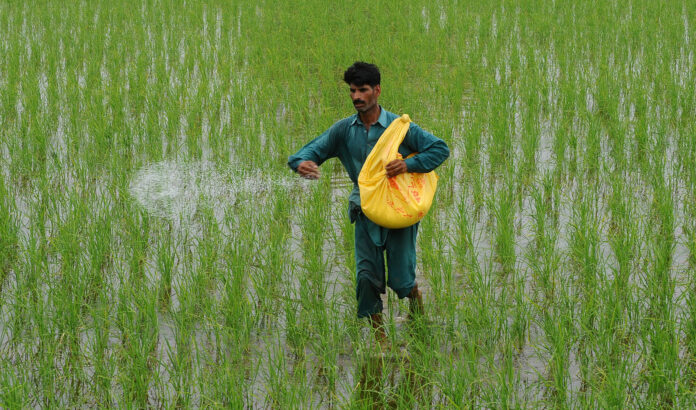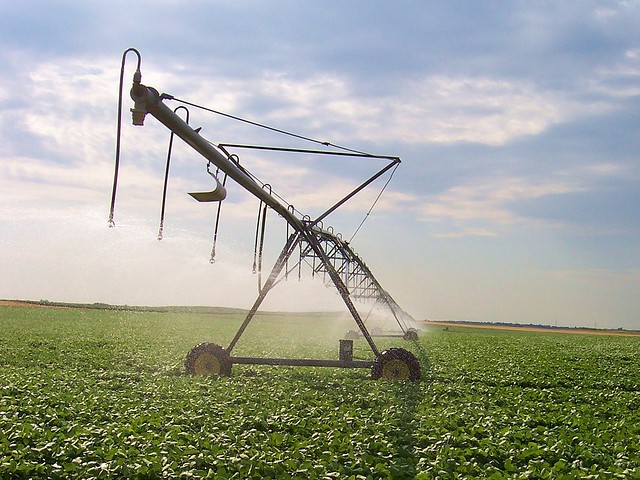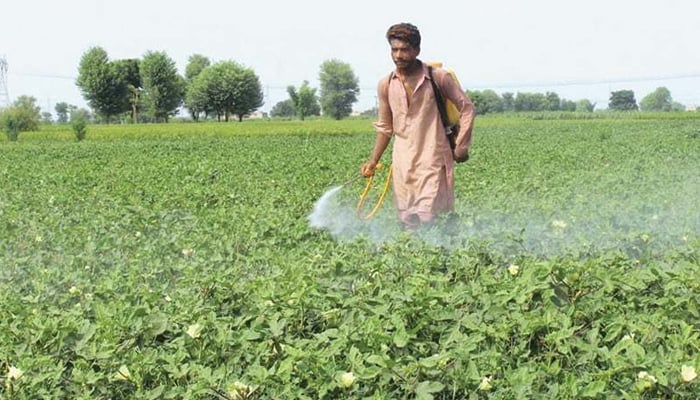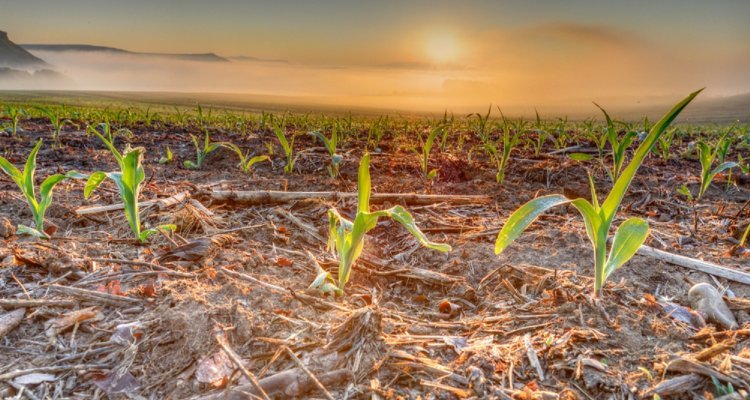Project Proposal
Enhancing Agricultural Efficiency through Advanced Technology
The aim of this project is to explore the potential of precision agriculture in mitigating the impacts of climate change on agricultural production.
For getting a complete proposal you can contact us at
Contact: gdn100@gmail.com / What’s App Us:+923082792040 and pay the price of your desired project.
Product Description
1-Introduction:
The aim of this project is to explore the potential of precision agriculture in mitigating the impacts of climate change on agricultural production. By utilizing advanced technology like sensors, drones, and GPS, farmers can monitor, manage, and optimize various agricultural parameters such as crop growth, soil moisture, and nutrient levels. This data-driven approach will enable farmers to make informed decisions for resource utilization, leading to increased productivity and resilience in the face of climate change.
1-Challenges: While implementing the Climate Change and Precision Agriculture project, several challenges may arise. It is essential to anticipate and address these challenges proactively.
Here are some potential challenges that may be encountered:
1. Technological barriers: The adoption of advanced technology, such as sensors, drones, and GPS, may pose challenges for farmers who are unfamiliar with or lack access to such tools. Limited technological infrastructure or inadequate training and support may hinder their ability to effectively utilize precision agriculture techniques. Providing appropriate training and access to technology, along with ongoing technical assistance, can help overcome these barriers.
2. Data management and analysis: Collecting and managing large amounts of data from various sources may present challenges related to storage, organization, and processing. Ensuring proper data management systems and employing skilled data analysts to analyze and interpret the data is crucial. Robust data management protocols and software can assist in efficient data analysis and reporting.
3. Financial constraints: Implementing precision agriculture techniques can require significant investments in equipment, sensors, drones, and other technology. Financial constraints may limit farmers’ ability to adopt these innovative approaches. Connections with financial institutions, government subsidy programs, or public-private partnerships can help overcome these financial barriers and provide farmers with access to funding options or cost-sharing initiatives.
4. Limited awareness and knowledge: Lack of awareness and understanding of precision agriculture techniques and their benefits can act as a barrier to adoption. This may occur among farmers, policymakers, or other stakeholders. Conducting outreach activities, such as workshops, training sessions, and information campaigns, to raise awareness and share knowledge about precision agriculture can help overcome this challenge.

6. Adapting to local conditions: Precision agriculture techniques may need to be tailored to specific local conditions, crop varieties, and farming practices. Adapting these techniques to suit different agro-ecological zones and farmer contexts can pose challenges. Conducting site-specific assessments, close collaboration with local farmers and experts, and employing a participatory approach can help overcome these challenges.
7. Limited scalability and connectivity: Precision agriculture requires an appropriate level of connectivity to access real-time data and remote monitoring capabilities. In remote or rural areas with limited connectivity, accessing and utilizing advanced technology may be challenging. Investing in infrastructure development, expanding connectivity, and exploring alternative solutions like offline data collection can help address these limitations
2-Objectives:
1. Assess the current challenges faced by farmers due to climate change.
2. Evaluate the effectiveness of precision agriculture in mitigating the effects of climate change on agricultural production.
3. Develop recommendations and guidelines for farmers to implement precision agriculture practices.
4. Raise awareness about the benefits of precision agriculture among farmers and key stakeholders.
3-Methodology:
1. Conduct a comprehensive literature review to understand the relationship between climate change and agriculture, as well as the potential of precision agriculture in addressing these challenges.
2. Establish field trials in selected agricultural areas to gather data on various parameters such as soil moisture, crop growth, and nutrient levels.
3. Utilize advanced technology like sensors, drones, and GPS for real-time monitoring and data collection.
4. Analyze the gathered data to identify patterns, correlations, and the impact of precision agriculture on agricultural efficiency and climate change mitigation.
5. Engage with farmers through workshops, training sessions, and knowledge-sharing platforms to disseminate information on precision agriculture practices.
6. Develop a set of recommendations and guidelines for farmers to implement precision agriculture techniques based on the project’s findings.
4-Out comes of project. The expected outcomes include:
1. Enhanced understanding of the challenges faced by farmers due to climate change: Through field trials and data collection, the project will provide valuable insights into the specific climate change-related challenges experienced by farmers in the selected agricultural areas. This understanding will serve as a foundation for developing effective mitigation strategies.
2. Assessment of precision agriculture effectiveness: By utilizing advanced technology such as sensors, drones, and GPS, the project will evaluate the effectiveness of precision agriculture in mitigating the effects of climate change on agricultural production. The data collected will be analyzed to determine the impact on crop growth, soil moisture management, and nutrient levels.
3. Development of recommendations and guidelines: Based on the project’s findings, a set of practical recommendations and guidelines will be developed to assist farmers in implementing precision agriculture practices. These recommendations will be customized to address climate change challenges specific to the selected agricultural areas, as well as the available resources and infrastructure.
4. Increased awareness and knowledge sharing: The project will conduct workshops, training sessions, and knowledge-sharing platforms to raise awareness among farmers and key stakeholders about the benefits and potential of precision agriculture. This will facilitate the adoption of precision agriculture techniques and promote sustainable agricultural practices.
5. Research report publication: A comprehensive research report will be produced, summarizing the project’s findings, methodologies, and recommendations. This report will serve as a valuable resource for farmers, policymakers, and researchers, providing insights into the application of precision agriculture in mitigating climate change impacts on agriculture.
6. Long-term impact: The project outcomes will contribute to sustainable agricultural practices and increased resilience in the face of climate change. Farmers who adopt precision agriculture techniques based on the recommendations and guidelines provided will benefit from optimized resource utilization, increased productivity, and enhanced adaptive capacity.
5- Sustainability: Sustainability is a crucial aspect of the project, and it encompasses several dimensions:
1. Environmental Sustainability: Precision agriculture promotes sustainable farming practices by optimizing the use of resources such as water, fertilizers, and pesticides. By monitoring soil and crop conditions in real-time, farmers can apply inputs precisely where and when they are needed, minimizing waste and reducing environmental impacts. This leads to improved soil health, reduced water and chemical runoff, and decreased greenhouse gas emissions associated with traditional agricultural practices.
2. Economic Sustainability: The adoption of precision agriculture techniques can enhance the economic viability of farming operations. By optimizing resource utilization and improving productivity, farmers can potentially reduce production costs, enhance crop yield and quality, and increase overall profitability. This economic sustainability can help farmers adapt to changing market conditions, invest in sustainable technologies, and ensure the long-term viability of their agricultural businesses.
3. Social Sustainability: Through the project’s outreach activities, farmers and key stakeholders will be educated and empowered to adopt precision agriculture practices. This knowledge-sharing approach fosters social sustainability by facilitating the dissemination of information, promoting innovation, and encouraging collaboration among farmers, researchers, and policymakers. By equipping farmers with the skills and tools needed to adapt to climate change, the project contributes to the social resilience of farming communities.

4. Knowledge Transfer and Capacity Building: The project aims to build the capacity of farmers and key stakeholders in precision agriculture techniques. Through workshops, training sessions, and knowledge-sharing platforms, participants will learn not only about the benefits of precision agriculture but also the necessary skills to implement and sustain these practices in the long term. By supporting knowledge transfer and capacity building, the project ensures the continued success and sustainability of precision agriculture adoption beyond the duration of the project.
5. Policy and Institutional Support: The project findings and recommendations can inform the development of supportive policies and institutional frameworks at local, regional, and national levels. This policy support promotes sustainability by creating an enabling environment for the wider adoption of precision agriculture. By advocating for policy changes that incentivize sustainable farming practices, the project contributes to the long-term sustainability of precision agriculture adoption and its positive impacts on agricultural efficiency and climate change mitigation.
6-Monitoring and evaluation project.
Monitoring Activities:
1 – Regular data collection: Continuous monitoring of field trials, sensor readings, and other relevant data to track changes in crop growth, soil moisture, nutrient levels, and other parameters.
2 – Progress tracking: Regular meetings with the research team to review project activities, identify any challenges or issues, and ensure timely implementation.
3- Quality assurance: Regular quality checks of data collection methods, data accuracy, and adherence to standardized protocols.
2. Evaluation Activities:
1 – Baseline assessment: Conducting an initial assessment of the current status of the selected agricultural areas, including climate change challenges and existing agricultural practices, before project implementation.
2- Mid-term evaluation: Assessing the progress and effectiveness of the project halfway through its duration to identify any necessary adjustments or improvements.
3- End-line evaluation: Conducting a comprehensive evaluation at the end of the project to measure the impact and outcomes achieved, assess the effectiveness of precision agriculture practices, and gather feedback from farmers and stakeholders.
4 – Impact assessment: Assessing the long-term impacts of the project on agricultural efficiency, climate change resilience, and the adoption of precision agriculture techniques. This may involve follow-up visits or surveys conducted after the project’s completion.
3. Indicators and Data Collection:
1 – Developing specific indicators to measure the project’s progress, effectiveness, and impact. Examples may include crop yield increase, reduction in resource use, adoption rate of precision agriculture techniques, and farmer satisfaction.
2 – Data collection methods may include field observations, sensor readings, surveys, interviews, and focus group discussions.
3- Data analysis: Analyzing the collected data to extract meaningful insights and assess the project’s performance against the set indicators.
4. Reporting and Feedback:
1 – Regular reporting to stakeholders, including project updates, progress reports, and M&E findings.
2 – Feedback loops with farmers and stakeholders to gather their perspectives on the project’s effectiveness, benefits, and areas for improvement.
5. Learning and Adaptation:
1 – Utilizing the M&E findings to identify lessons learned and make necessary adjustments to project implementation.
2 – Sharing the project’s successes, challenges, and lessons learned with relevant stakeholders and the wider community.
3 – Documenting and disseminating best practices and recommendations for future precision agriculture projects. BUDGET SUMMERY …. Breakdown of the budget for each activity and item:
TV
1. Field trials and data collection equipment:
1.1 – Purchase of moisture sensors: $10,000
1.2 – Purchase of nutrient level sensors: $12,000
1.3 – Purchase of crop growth monitoring tools: $8,000
1.4 – Purchase of soil sampling equipment: $10,000
Total: $40,000
2. Procurement of advanced technology tools:
2.1 – Purchase of drones for aerial monitoring: $15,000
2.2 – Purchase of GPS devices for accurate mapping: $8,000
2.3- Purchase of weather monitoring sensors: $7,000
Total: $30,000
3. Research team salaries and expenses:
3.1 – Research team salaries (project duration of 1 year): $60,000
3.2- Travel and accommodation expenses: $10,000
3.3- Data analysis software and licenses: $5,000
3.4 – Fieldwork expenses: $5,000
Total: $80,000
4. Outreach activities:
4.1- Workshops for farmers: $10,000
4.2 – Training sessions for farmers: $6,000
4.3- Production of informational materials (brochures, pamphlets): $4,000
Total: $20,000
5. Data analysis and research report production:
5.1 – Data analysis and statistical software: $10,000
5.2 – Report writing and publication expenses: $5,000
Total: $15,000
6. Miscellaneous expenses:
6.1- Contingency fund: $3,000
6.2- Administrative expenses: $2,000
Total: $5,000
Grand Total: $190,000
Please note that the remaining $10,000 can be allocated for unforeseen expenses or additional fieldwork if required.
This budget provides a breakdown of the estimated costs for each activity and item necessary for the successful implementation of the project.











Reviews
There are no reviews yet.